As part of reaching out and promoting the work of the Trust I took up the offer of member Lorraine Warshaw to give a presentation to the Forres Rotary Club which was a fun thing to do and was very well received. It was good to connect with some old school friends but also other locals I have worked or interacted with over the years. One of these was Tanya McLaren now Tanya Barker who for many years was a reporter for the local paper the Forres Gazette. For fun she wrote a little report on the event which you can have a look at below. Some of the facts are not totally accurate which was always the case with Tanya but her genuine appreciation given during the Q&A session after the presentation of the work of the trust and the long journey it has taken to develop its work was most heart warming.
Jonathan Caddy
FHT Chair
Forres Rotary hosted retired local teacher, Jonathan Caddy, as speaker for one of their August evening meetings, held at the Mosset Tavern.
Mr Caddy spoke to Rotarians about the Findhorn Hinterland Trust which was originally formed in 2015 as the Hinterland Group to manage a large parcel of land which encompasses dunelands and the former Wilkie’s Wood on the edge of Findhorn.
The organisation was originally created to manage the 35 hectares, following a meeting in the James Milne Institute in Findhorn where Mr Caddy explained that although Duneland Ltd had purchased the area that it was a huge area to manage and would be in the interests of the community to jointly manage some of the land outwith the Ecovillage, so working in partnership could begin to protect the fragile dunes area which was included.
Forres Rotarian and former Forres Gazette editor, Tanya Barker was at the meeting and recalled the atmosphere at the JMI (James Milne Institute) was originally suspicious of the offer to jointly manage land, given plans to build homes on the outer edge of the Foundation were taking shape, and there was confusion about what was actually being proposed.
“It was a very long and at times, a very volatile meeting, where a room full of people all wanted to have their say,” she said. “I had to go back to the office and write a story which captured the main essence of what was being proposed without showing bias. Thankfully, things progressed quickly, and the community headed up by a small group embraced the idea of working together to try and protect the fragile dunes area. It is clear to me from speaking to Jonathon recently that obstacles have been overcome and the Hinterland has benefited from community involvement over the years.”
Mr Caddy explained to Rotarians via a powerpoint presentation, that as well as a green burial site which has been created there, existing alongside the eco-village that following a lot of work, the Hinterland Trust has now successfully achieved official recognition of some of the extremely rare lichen and other fauna and flora that exist near Findhorn, which demonstrates the ongoing need to protect the duneland area for future generations.
President Jackie Stephen thanked the speaker for an interesting and informative talk which included information about future plans including the Dune Restoration Project and an offer was made for Rotarians to go along to have a look at the site and work being done there.
The Hinterland group is also holding a Moth Trapping Event on September 1st where moths caught overnight will be viewed before being released. And a walk and talk open to the public is due to take place on November 2nd with more information available on www.findhornhinterland.org
Tanya Barker


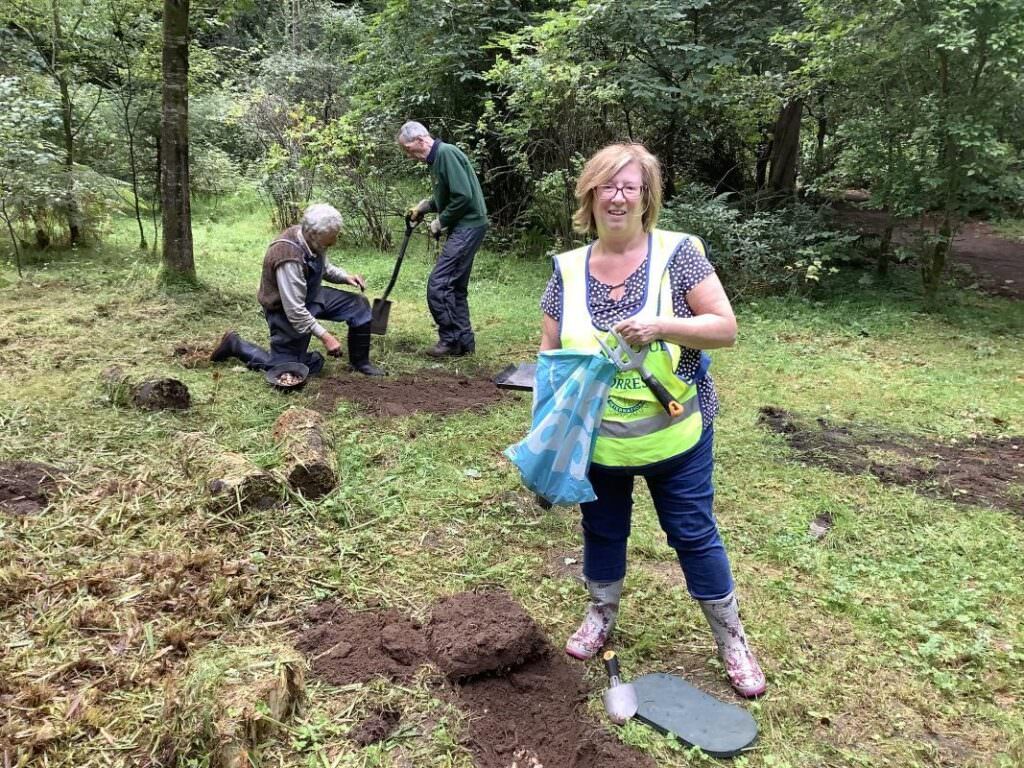
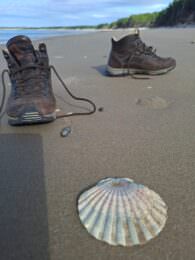
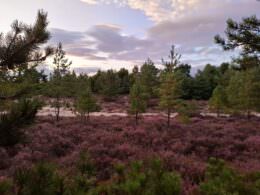
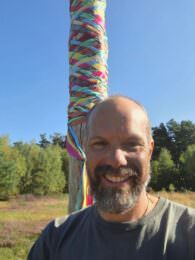
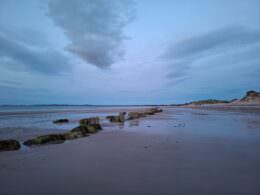
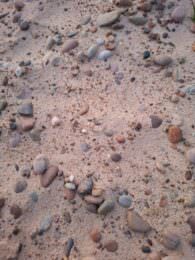
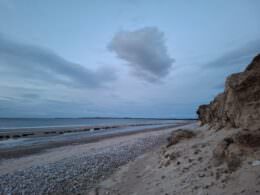
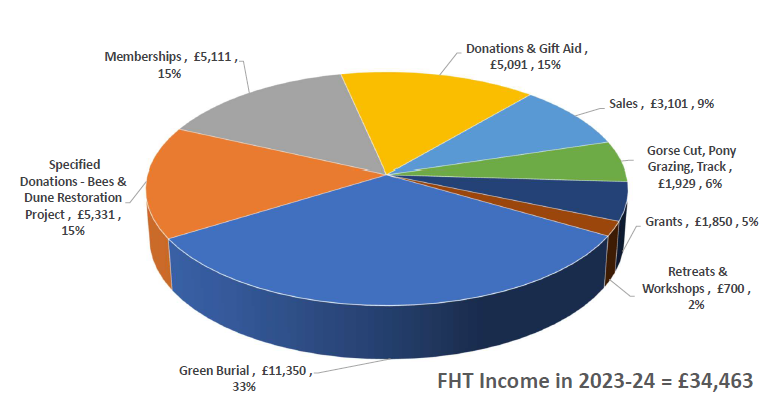
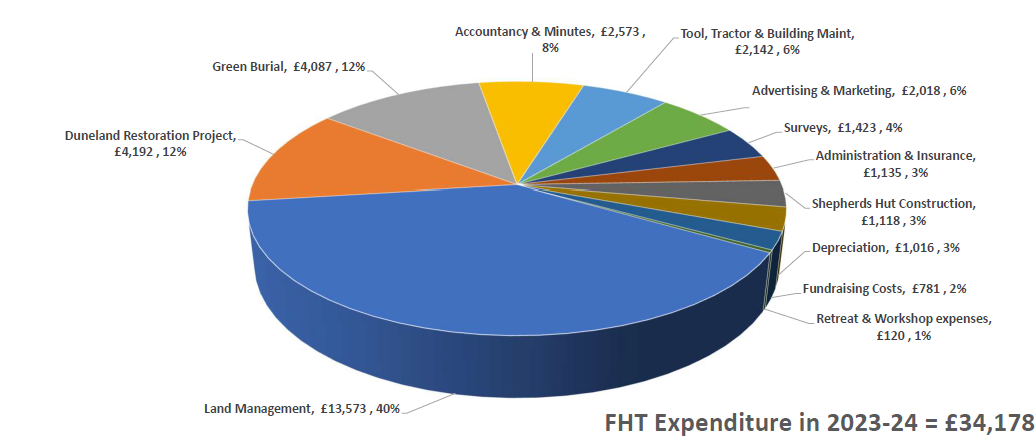
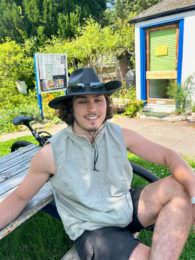
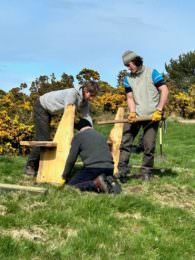
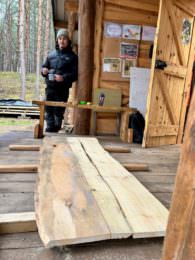
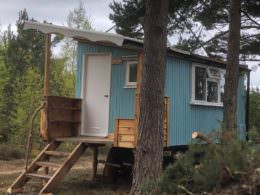
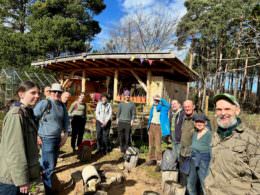
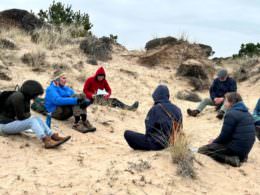
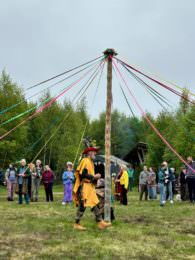
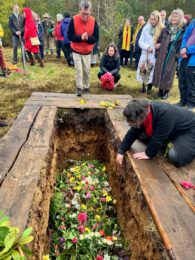
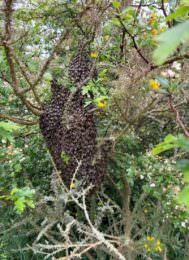
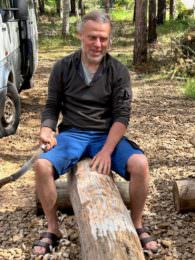
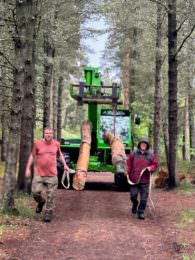
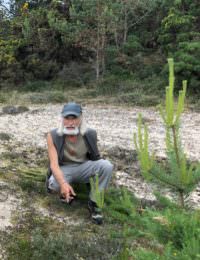
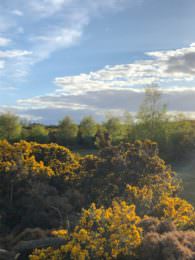
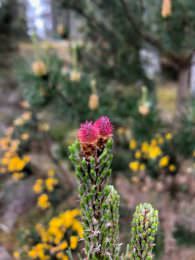
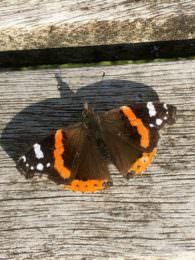
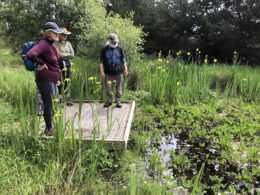
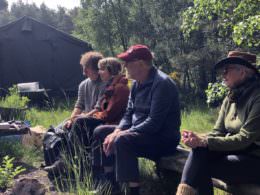
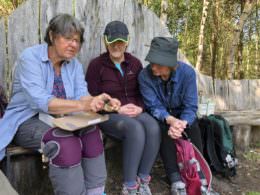
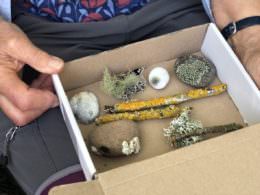
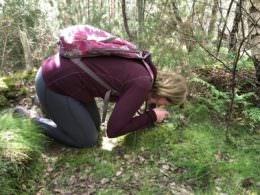
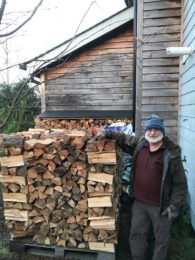
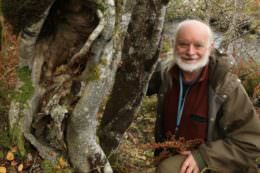
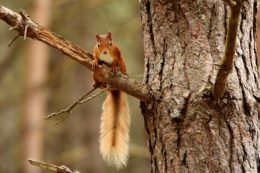
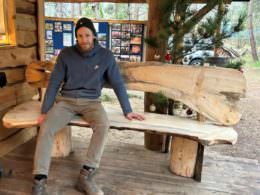
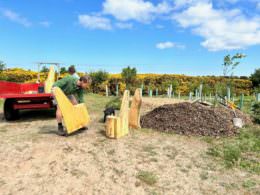
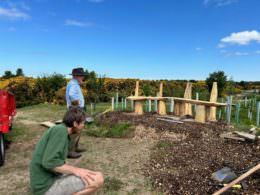
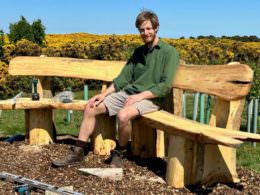
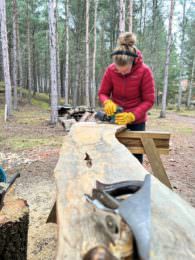















News from the Land – Summer 2024
‘I ask for a moment’s indulgence to sit by Thy side.
The works that i have in hand
I will finish afterwards…’
(R.Tagore)
Out on the ‘fallen acres’ a 17 strong ‘vision quest’ group from Central Europe is preparing for their solo time in the wilder parts of our land.
While throughout the summer we’ve had a slow trickle of campers and the occasional event at the shelter- it is great that now that every camping pad is occupied by a tent, and there are even some tents on the tracks through the birches. It is the only time this summer that we had the camping pads and the shelter area being so busy for 10 days.
While much of the world is heating up at alarming rates it seems that here in the North of Scotland things are getting cooler. We’ve had a fresh and damp summer. Yes, there were days of working in shorts and T-shirt, but overall it was never too hot for the strong physical work required on the land.
Together we achieved a lot. Much of our time was spent with ‘prickly issues’ – cutting gorse. We maintained and improved all our areas of ‘species rich grassland’ and the now beautifully purple flowering heath lands. We cleared tracks and paths and fire-breaks. On one of the fire-breaks – which gets mowed every year – we counted 25 different species of flowers and grasses ! Together they provide an inviting home for a spectrum of insects and birds.
And many of our days are filled with numerous, unglamorous small jobs which are needed to be done to care for this land and all its creatures. Replacing fence posts on the pony fields, putting over 150 little trees into 1.20m tubes to protect them from the deer, replacing broken tree-stakes – or loading the tractor-trailer with woodchips to give our camping pads a fresh layer in preparation for the vision questers. Brambles were pulled up on newly planted areas, and baby trees have been dug up in areas where they would not have a future and potted to be planted out in the autumn.
And within it all we have explored the deepening of the human connection with the surrounding natural world.
I often set tasks for the day beyond the physical work –
How can we stay curious ? (As a gateway to intimacy…)
Can you find something on the third day of doing the same job, something which you have not seen here before ? (findings ranged from flowers and fungi, to insects, to lizards…)
How can we turn our work into ‘worship’ – an offering of our devotion ?
Well, the harvesting season is about to begin. Apples & pears are nicely ripening in the gardens, so are the wild plums on the land. We’ve snacked on the wild raspberries and now the first blackberries are ripe.
With the recent warm rains the mushrooms are finally poking their heads above the ground in great variety.
I am sure the many bright red berries which shine like rubies on the rowan trees are a happy sight for the birds.
‘…Now it is time to sit quiet
Face to face with Thee,
And to sing dedication of life
In this silent and overflowing leisure.’
(R.Tagore)